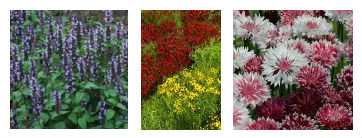Buzzing & Beauty in your Garden

Who doesn't love butterflies flitting about in the garden? I think they are beautiful and spend lots of time in the garden just watching them and taking photos in the hope of being able to capture their beauty (not yet achieved!). Growing swan plants to encourage the Monarch butterflies is great fun. It's also fun finding the chrysalis in amongst the other plants and trees, in particular the lime tree next to that garden.
The buzzing of bees is a wonderful noise to treasure in any garden as they busy themselves doing all that good work. Did you know that bees are particularly attracted to blue flowers? Have you seen the cover on our catalogue this year? We have used a stunning picture of the Borage flower this season (thanks to Natasha Bartley), because this year we are focusing on bee, butterfly and beneficial insect plants. As I have a small garden, I have to plan carefully the positioning of my bee-attracting flowers. Last year I experimented with Borage. I also like to plant some up in pots that I can move around the garden. I had a good crop of tomatoes and beans which I'm sure is due to the borage drawing the bees to the garden.
The bees are important to creating a sustainable growing environment - commerical vineyards and orchards are aware of this and are now showing huge interest in planting plants that will attract bees amongst their vines and trees. The introduction of the Varroa mite decimated our bee population a few years ago but thanks to our beekeepers the bee population is now increasing. Be careful with your sprays because these are another big danger to the bee population. I recently read that Pyrethrum is toxic to bees so if you are using sprays, try to spray in the evening when the bees are back in their hives.
For this year's catalogue, Gerard has concentrated on adding flower varieties that attract beneficial insects, bees, and butterflies into our gardens.
NEW VARIETIES for attracting bees, butterflies and insects:
Agastache Astello Indigo - bees are attracted to the aromatic nectar and butterflies are attracted to the blue flowers.
Coreopsis Amulet - a wild flower that bees love.
Cornflower Classic Fantastic & Classic Romantic - edible flowers that are good for attracting bees.
Nepeta Border Ballet - see the bees and butterflies dance! Cats love it too as it is from the catnip/catmint family.
Salvia Tricolour Mix - another flower that attracts the bees.

OTHER VARIETIES
There are many other flowers that will draw insects to your garden. Here are a few reasons why a plant may be attractive to insects :
- It may provide a varied food source of nectar, pollen or leaves.
- Plants that flower at different times of the day fit in with differing feeding patterns.
- Short florets suit wasps who suck the nectar.
- Long florets suit butterflies with their long proboscis.
- It may provide a surface on which to lay eggs.
- It may provide a safe environment for wintering over.
If you are interested in drawing a few more insects into your garden this year, here are some ideas for some FLOWERS that are loved by insects - butterflies in particular:
Asclepias Butterfly Flower & Asclepias Swan Plant
Cosmos
Echinacea
Mignonette
Phacelia Lacy
Salvia
Tithonia Goldfinger
Tweedia Heavenly Blue
Or you could try some of these HERBS - you can use them in the kitchen AND they will attract bees into your garden:
Anise
Bergamot
Chamomile
Coriander
Dill
Sage
Thyme
For those of you who are having trouble choosing from all these wonderful varieties, we have created some Selection Packs of Bee favourites and Butterfly favourites.
And there are always the popular wildflower mixes in our range:
Wildflower Beneficial Insect blend
Wildflower Low Grow blend
Wildflower Roadside blend
White Alyssum for Orchards
Next week is NATIONAL BEE WEEK (click here to see National Bee keepers information about this).
This runs from 20-24th August and we support it wholeheartedly. We need to actively protect and preserve our bees and create environments in which they can thrive. Without bees our agricultural industry would suffer hugely as we would be unable to grow many of the plants and flowers we currently have and our food supply would be in dire straits. So if you, like us, love seeing these beautiful, hard-working and useful little creatures in your garden, we hope that you will find some of our suggestions for bee, butterfly and beneficial insect plants to be useful. We wish you many bees and butterflies this season!

























































